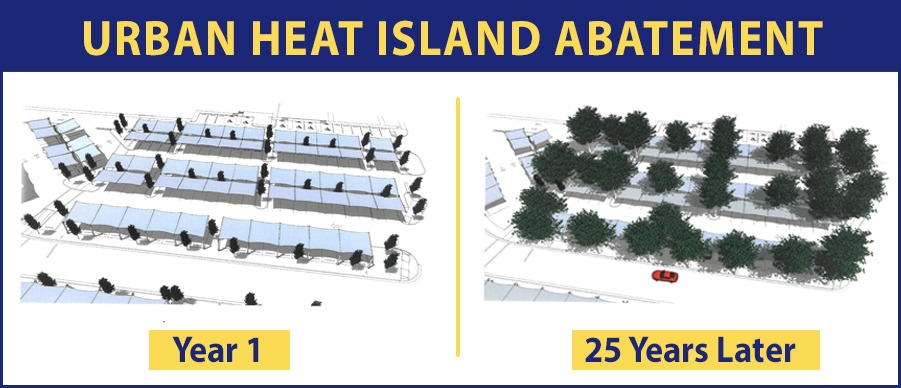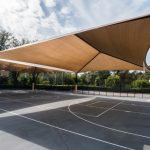How Shade Can Help Slow Climate Change
There are no passengers on the Spaceship Earth. We are all crew.
The quote, from philosopher Marshall McLuhan, may be truer today than ever given the threats facing the planet.
One of them, urban heat island effect, may sound like something dreamed up by a super villain, but it’s a real phenomenon impacting countless communities … possibly your own.
In densely populated areas around the world, human activities can contribute to a temperature increase of up to 22 degrees Fahrenheit compared to more rural areas. Among American cities, Las Vegas, Albuquerque and Denver have seen the highest related temperature spikes.
What causes urban heat island effect?
One of the major causes of the phenomenon is the urban landscape. Asphalt, concrete and steel absorb and retain heat.
Urban heat island effect can have dangerous consequences that are amplified by climate change. These include harsher heat waves, according to the Environmental Protection Agency. More than 600 Americans die every year of heat-related illnesses, and the elderly and small children are at the highest risk for heat stroke, the Centers for Disease Control reports.
Urban heat island effect is also accelerating the rate of climate change. Hotter temperatures mean increased demand for air conditioning, which leads to more green house gas emissions. The increased strain on America’s electrical infrastructure could result in large-scale power outages. By 2050, the U.S. could require up to 20% more electricity to meet its needs due to climate change and urban heat island effect, according to the EPA.
How to fight urban heat island effect
Fortunately, mitigating the impact of urban heat island effect can go a long way toward protecting the environment.
The EPA advises that city planners should strive for smart growth, reducing the need for gas-powered transportation. Growing grass or other foliage on roofs can help lower temperatures and reduce flood risks. And shade plays a critical role in cooling cities.
Scientists and inventors have come up with all kinds of ideas for blocking the sun, from launching mirrors into space to reflect the sun’s light to spraying aerosol particles into the atmosphere to diffuse its rays. But a simpler solution is adding shade right here on the ground, and that’s a strategy government officials and property owners can begin implementing today.
On a hot day in an urban environment, pavement can reach up to 90 degrees Fahrenheit higher than the air if it’s exposed to direct sunlight, according to the EPA. Shaded pavement, however, remains at air temperature, preventing it from retaining the excess heat that’s a hallmark of urban heat island effect. Shade also reduces the rate at which gasoline evaporates from vehicles, resulting in fewer carbon emissions. And it encourages people to spend time outside, possibly reducing demand for air conditioning.
Steps you can take
Of course, there are a variety of shade solutions available. Trees, not palm trees, are a good option in many cases because they suck up heat-trapping carbon dioxide, while increasing property values. Many trees, however, require years of growth before their canopies can provide a substantial amount of shade. That’s why combining shade structures with trees where there’s lots of pavement is a good idea.
Shade structures are a great option for protecting the environment and adding functionality to any outdoor space. Apollo Sunguard offers an industry-leading warranty on its shade structures: 20 years for its steel framework and 15 for its fabric covers. In fact, Apollo’s products, in most cases, last about as long as it takes for a shade tree to reach maturity. Thanks to Apollo’s durable materials and expert engineering, its shade structures have long lifespans, reducing waste that could result from more temporary shade fixes.
Temperatures underneath Apollo shade structures can be up to 20 degrees Fahrenheit cooler than they are in direct sunlight, both enhancing comfort and reducing the impact of urban heat island effect on the environment.

Urban heat island effect is accelerating the rate of climate change. Help mitigate this serious environmental problem by adding shade to parking lots.
The benefit of shade structures includes:
- Block up to 96% of UV radiation
- Lower temperatures by up to 20 degrees
- Breathable fabric natural circulation of air
- No energy consumption







